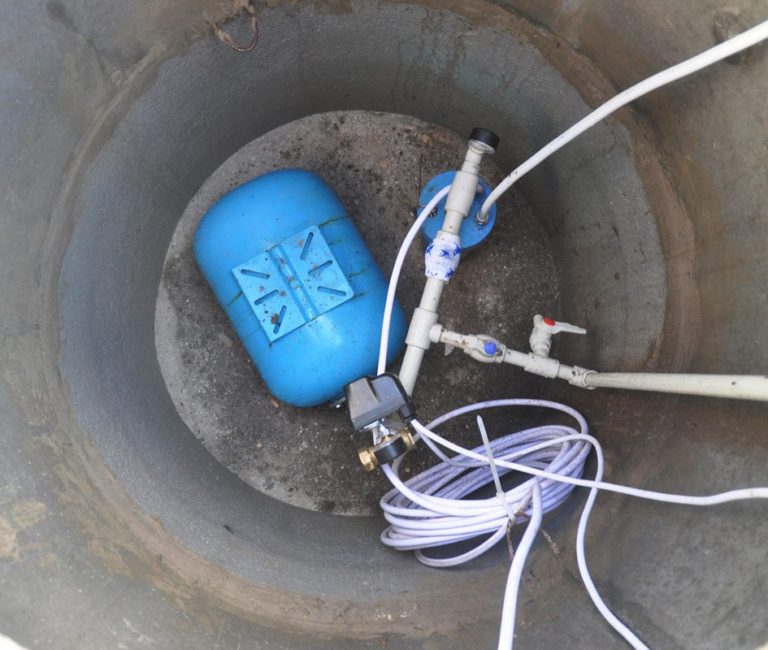We've stumbled upon this great article pertaining to Cleaning & Maintenance Tips for Your Home's Sump Pump below on the internet and decided it made perfect sense to relate it with you on my blog.

Sump pumps are vital elements in several homes, specifically in areas prone to flooding or too much dampness. They assist protect against water damage by successfully getting rid of excess water from basements or crawl spaces. However, like any other appliance, sump pumps require regular upkeep to guarantee they operate effectively when required the most. Cleaning your sump pump is an essential part of its upkeep, and comprehending exactly how to do it properly can conserve you from pricey fixings and prospective disasters.
Introduction
Preserving a tidy sump pump is vital for its correct performance and long life. Neglecting this important task can lead to clogs, malfunctions, and eventually, water damages to your home. As a result, learning how to clean up a sump pump is vital for home owners who rely on these tools to keep their cellars completely dry and safeguarded.
Recognizing the Sump Pump
Before diving right into the cleaning procedure, it's essential to have a standard understanding of just how a sump pump works. Commonly set up in a pit or container listed below the cellar flooring, a sump pump contains numerous vital elements, including a pump, a float switch, and a discharge pipe. When water gathers in the pit, the float button activates the pump, which then pumps the water out with the discharge pipe, far from the structure's foundation.
Signs of a Dirty Sump Pump
Understanding when your sump pump requires cleaning is critical for avoiding potential malfunctions. Some usual indications that show a filthy sump pump consist of unusual sounds during operation, lowered water circulation, and noticeable particles in the pit. If you observe any one of these signs, it's vital to clean your sump pump immediately to stay clear of any type of additional concerns.
Getting ready for Cleaning
Prior to you begin cleaning your sump pump, it's vital to take some safety precautions. Beginning by shutting off the power to the pump to prevent any kind of electrical accidents. Additionally, wear proper protective gear, such as handwear covers and safety glasses, to shield yourself from dirt, debris, and potential pathogens.
Detailed Guide to Cleaning a Sump Pump
Shutting down the Power
Begin by separating the power supply to the sump pump to avoid any type of accidents while cleansing.
Getting Rid Of Debris and Dirt
Make use of a bucket or a scoop to eliminate any type of noticeable debris, dirt, or debris from the sump pit. Dispose of the particles appropriately to prevent it from obstructing the pump or the discharge pipeline.
Cleansing the Pump and Drift Switch Over
When the pit is clear of particles, very carefully remove the pump from the pit. Check the pump and the float switch for any kind of indicators of damage or wear. Make use of a soft brush or fabric to clean up the surface areas and remove any gathered gunk.
Flushing the System
After cleaning the pump and float switch, flush the sump pit with clean water to remove any staying dust or sediment. This will certainly help guarantee that the pump operates efficiently and successfully.
Checking for Correct Functioning
Before reinstalling the pump, carry out a fast test to make certain that the float button triggers the pump appropriately. Put some water right into the sump pit and observe the pump's procedure. If whatever is operating properly, you can reassemble the pump and reconnect the power supply.
Upkeep Tips to Keep Your Sump Pump Clean
Along with periodic cleansing, there are several upkeep tips you can follow to maintain your sump pump in optimal condition:
- Regular Inspection: Inspect your sump pump frequently for any kind of indicators of wear, damage, or blockages.
- Maintaining the Surrounding Location Clean: Ensure that the area around the sump pit is without debris, dust, and blockages.
- Checking the Pump Periodically: Check your sump pump regularly by putting water into the pit and observing its operation. This will assist you identify any type of prospective problems prior to they rise.
Verdict
Cleaning your sump pump is a vital element of its maintenance and ensures that it runs effectively when you require it one of the most. By following the actions detailed in this guide and including routine maintenance right into your routine, you can prolong the life-span of your sump pump and secure your home from water damage.
6 STEPS ON HOW TO CLEAN A SUMP PUMP PROPERLY
UNDERSTANDING SUMP PUMPS
Your sump pump plays a crucial role in protecting your home by managing and removing excess water. It primarily functions as a “shield”, guarding your basement against the damaging effects of water accumulation. The pump is housed in a sump pit in the lowest part of your basement, and its job is to pump out any water that collects there.
During heavy rainfalls or when snow melts rapidly, water can infiltrate your basement, posing potential risks like flooding, structural damage, and harmful mold growth. Here, the sump pump springs into action, pumping out the intruding water and directing it away from your home.
SAFETY FIRST
Before cleaning, remember to prioritize safety. Disconnect the sump pump from the power source to prevent any accidental electric shocks. Also, wear sturdy gloves to protect your hands from any sharp or dirty components within the pump.
REMOVE THE SUMP PUMP
After ensuring your safety, the next step is to remove the sump pump from its pit. Doing this might require careful maneuvering as you don’t want to damage any pump components. Once removed, clean the sump pit to remove any accumulated debris or sludge.
INSPECT THE PUMP
Inspect the pump for any visible signs of wear or damage. Check the power cord, float switch, and impeller housing. If any components look worn out or damaged, consider replacing them to ensure optimal performance.
CLEAN THE PUMP
Thoroughly clean the pump with warm, soapy water. Make sure to rid it of any dirt, gravel, or other debris that might impede its performance. You can use a toothbrush to clean the small, hard-to-reach parts of the pump.
REINSTALL THE SUMP PUMP
- Reinstall the pump into the sump pit
- Make sure it’s positioned correctly to remove the water effectively
- Once it’s back in place, reconnect it to the power source
TEST THE PUMP
Finally, pour some water into the pit to ensure the pump works correctly. It should start automatically and begin pumping out the water; if it doesn’t, check the power source and the positioning of the pump.
Remember, while cleaning your sump pump is an essential part of home maintenance, hiring a professional plumber for a thorough inspection and cleaning at least once a year is also important. This will ensure that your pump is in optimal condition, ready to protect your home from potential water damage.
BEST PRACTICES FOR CLEANING SUMP PUMP DISCHARGE PIPES
- Regular Inspection: Regularly inspect your discharge pipes, especially during heavy rainfall or snowmelt periods. Look for any signs of blockage or damage. Early detection of problems can prevent serious issues down the line.
- Periodic Cleaning: Over time, sediment and debris can accumulate in the discharge pipes, impeding the flow of water. Regular cleaning helps keep the pipes clear and functioning efficiently. You can use a high-pressure water jet to effectively clean the pipes.
- Insulation During Winter: In colder climates, discharge pipes can freeze, blocking the outflow of water. Protect your discharge pipes from freezing temperatures by insulating them with foam pipe insulation. This will ensure the sump pump can continue to discharge water even in freezing conditions.
- Proper Positioning: The discharge pipe should be positioned to direct water away from your home’s foundation. Improper positioning can lead to water seeping back into the basement. Ensure the pipe is long enough and angled correctly.
- Installation of a Check Valve: A check valve prevents water from flowing back into your sump pit after the pump has pushed it out. Installing a check valve helps maintain the efficiency of your sump pump and reduces the risk of flooding.
- Minimize Pipe Turns: Every curve or turn in the discharge pipe can decrease the efficiency of water flow. By minimizing turns and bends in your discharge pipe, you can increase the efficiency of your sump pump.
https://www.fullspeedplumbing.com/how-to-clean-a-sump-pump-properly9999/

We were introduced to that article about How To Effectively Clean A Sump Pump from a buddy on another web page. So long as you appreciated our blog posting kindly do not forget to share it. I recognize the value of reading our article about .
Click Here
Comments on “Step-by-Step Instructions for Taking Care of a Sump Pump”